Cooking salmon can be tricky. If you cook it too long, it can become dry and overcooked. Too short, and it won’t have the desired texture or flavor. But when cooked correctly, salmon is juicy, flavorful, and one of the healthiest proteins you can eat. So how long to bake salmon at 425 in foil? Read on to learn the perfect baking time for this delicious dish!
What You Need
When baking salmon, you’ll need critical items to ensure the best results. Start with fresh or frozen salmon fillets and season them with your favorite spices. You will also need a baking sheet lined with aluminum foil and an oven preheated to 425°F. An oven thermometer is recommended for accuracy.
Finally, you may want to have a digital cooking thermometer to check the fish’s internal temperature before serving. With these items, you can easily bake delicious salmon fillets in no time!
Preparing the Salmon
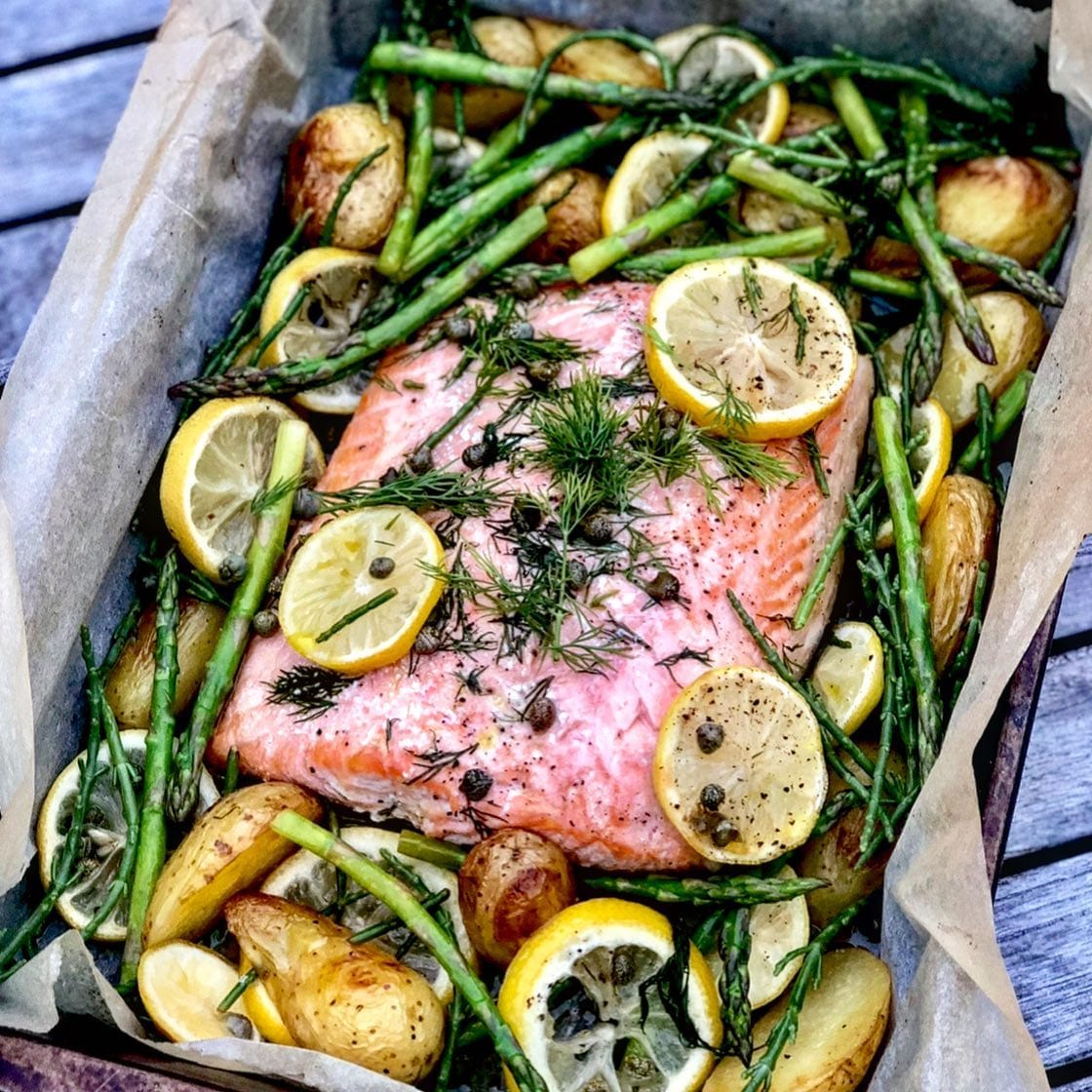
Preparing the salmon for baking is simple and easy. Start by preheating your oven to 425°F (215°C). Rinse the salmon under cold running water and pat dry with paper towels. Place a large foil on a baking sheet and lightly spray with cooking oil. Place the salmon fillet in the middle of the foil and season it generously with salt, pepper, herbs, or any other desired seasonings.
Then fold up the edges of the foil to create a sealed packet. Bake for 10-12 minutes per inch of thickness or until it flakes easily with a fork. When done, remove from oven and let cool before serving. Enjoy!
Baking the Salmon
Baking salmon is an easy and delicious way to enjoy the health benefits of this lean, nutrient-packed fish. You’ll want to bake your salmon at 425 degrees Fahrenheit for 15-20 minutes per inch of thickness to get the best results.
Place a large aluminum foil on a baking sheet and lightly brush it with olive oil. Place your salmon fillets on top of the foil, season with salt and pepper, and top with slices of lemon or lime for added flavor.
Bake for 12-16 minutes until cooked through at the thickest part. Enjoy freshly baked salmon with steamed vegetables or over a bed of greens for a healthy meal!
How Long To Bake Salmon At 425 in Foil?
The answer to this question depends on the thickness of the salmon. Generally, it’s best to bake salmon at 425 degrees Fahrenheit in foil for 15-20 minutes per one inch of thickness.
For example, if your salmon is one inch thick, you bake it for 15 minutes. If your salmon is two inches wide, you will bake it for 30 minutes. To ensure your salmon is cooked through, you can also use a thermometer to check the internal temperature of the salmon. The internal temperature should reach 145 degrees Fahrenheit to cook through.
Are you looking for a delicious and easy way to prepare salmon? If so, we’ve got just the thing for you! Baking salmon at 425 degrees in foil is a great way to get juicy, flavorful results every time. We’ll explain how long it takes to bake salmon at 425 degrees in foil so that you can enjoy this delicious fish dish in no time.
The Benefits of Baking in Foil
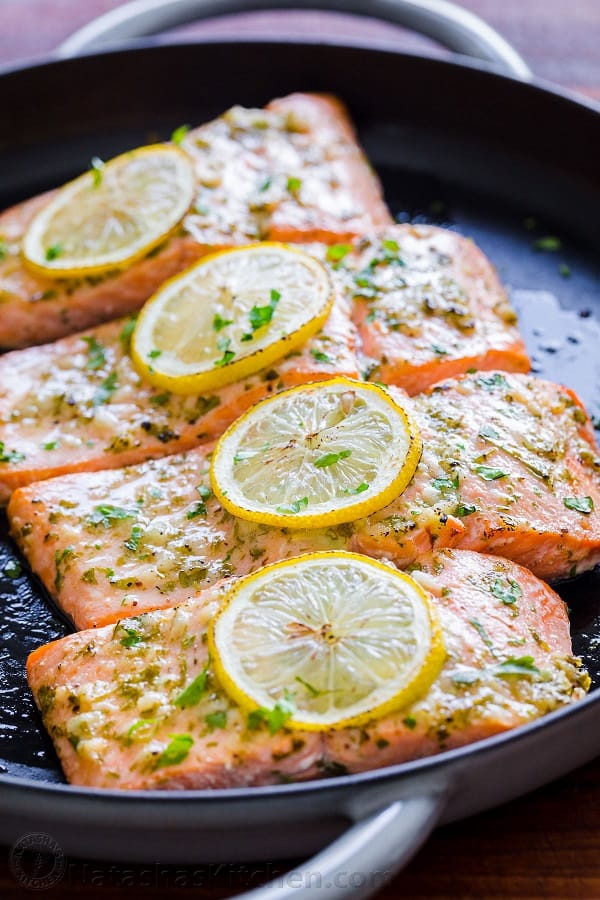
Baking in foil is an easy and efficient way to cook various dishes. Whether cooking fish, vegetables, or even dessert, baking in foil can help you create delicious meals with minimal effort. The foil helps to retain moisture in the food while also sealing in flavor.
Additionally, it helps keep clean-up simple as there won’t be any pans or dishes to scrub after dinner.
Not only does baking in foil make cooking easier, but it also provides many health benefits. Because the food is sealed within the aluminum foil, it will retain more nutrients than cooked without. It can also reduce fat and cholesterol levels since this cooking method does not need extra oil or butter. Baking in foil can be used for various recipes, from savory main dishes to sweet treats!
Estimating Cooking Time
Estimating the cooking time for salmon can be tricky, but there are some general guidelines you can follow. The best temperature to bake salmon is between 350-450 degrees Fahrenheit and the cooking time will vary depending on the thickness of your salmon filet.
For thin fillets, baking at 425 degrees for 5-6 minutes per half is sufficient. Thicker fillets may need up to 15 minutes. If you’re baking frozen salmon, it’s best to cook it at 425F for 15 minutes in a covered baking dish with foil.
Timing should depend on the thickness of your salmon; typically, a one-inch thick piece requires 12-14 minutes of baking time.
How to Tell When Salmon is Cooked
Knowing when your salmon is cooked perfectly can be tricky. To ensure it’s done, use a food thermometer to check the internal temperature of the fish. The safe internal temperature for fully cooked salmon is 145°F (63°C). If the temperature reads lower than this, keep cooking for a few more minutes and check again.
When baking or grilling salmon fillets, you’ll want to cook them for about 10-12 minutes per inch of thickness at 425°F (218°C). You can also tell if your salmon is done by gently pressing it with a fork or your finger – if it flakes easily, it’s ready.
If you’re sautéing or pan-frying your salmon, you’ll want to cook it until the outside has turned a golden brown color and the inside looks opaque. To help keep your salmon from drying out while cooking, try adding butter or oil before placing it in the pan.
Finally, ensure that you let your cooked salmon rest for 5 minutes before serving so that all of its delicious flavor and juices are retained! With these tips in mind, you’ll be able to create perfectly cooked salmon dishes every time, masterfully!
Now that you know how long to bake salmon at 425 in foil, nothing is stopping you from trying this recipe today!
Other Options for Baking Salmon in Foil
Baking salmon in foil is a simple and delicious way to enjoy this healthy fish—it locks in moisture, keeping the salmon moist and tender while preventing it from drying. You can add herbs and spices to the foil packet for added flavor.
Additionally, baking salmon in foil requires minimal preparation and clean-up time – wrap your fish in aluminum foil and pop it into the oven. You can also bake multiple pieces of salmon at once, making it an excellent dish for entertaining guests or weeknight dinners.
With a few simple steps, you’ll have delicious baked salmon with minimal effort!
Adding Herbs and Spices to Your Dish
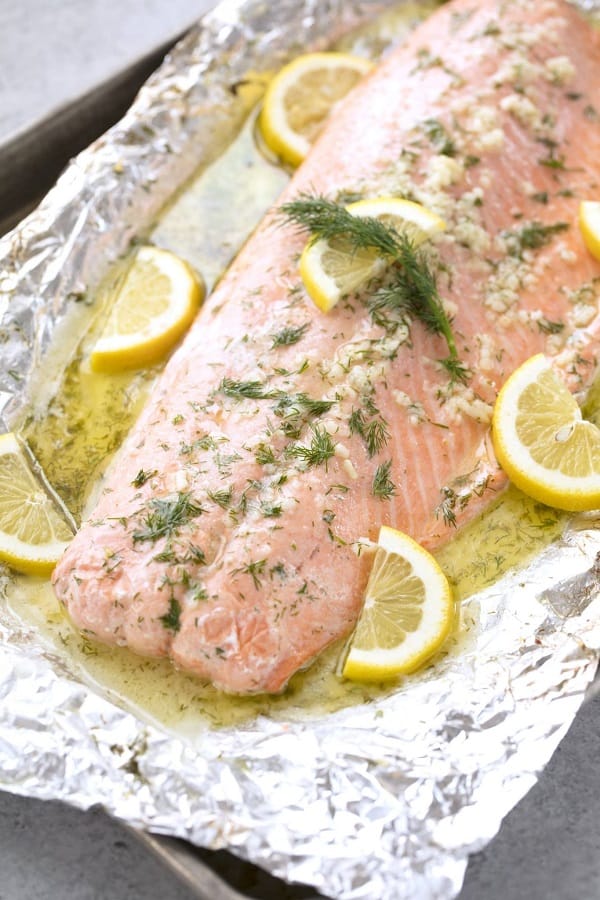
Adding herbs and spices to your dish can add a new layer of flavor and texture. Herbs and spices provide an array of health benefits, such as antioxidants, anti-inflammatory effects, and improved digestion.
Not only do they add flavor, but they also help to reduce the need for salt or sugar. When using herbs and spices in cooking, it is important to use the freshest possible products for optimal flavor. Freshly dried or ground herbs are usually better than pre-ground products. It is also important to note that not all herbs have the same flavor intensity, so you may need to adjust your recipes accordingly.
Here are some tips for adding herbs and spices to your dishes:
- Start slow – When introducing unfamiliar flavors into a dish, start with small amounts, so you don’t overpower the other ingredients. You can always add more if needed, but it’s challenging to take away if it’s too strong!
- Pair appropriately – Herbs and spices pair best when they complement each other’s flavors instead of competing against them. Try pairing earthy rosemary with savory thyme or sweet cinnamon with spicy chili powder for added dimension to your dish.
- Examine the color – Herbs that have a brighter green color tend to be more potent than those that appear brown or gray due to their exposure to light and air over time, reducing their potency level significantly.
- Smell before adding – To ensure maximum freshness, smell your herbs before adding them to your dish, as this will indicate how potent they are before using them in cooking!
Herbs and spices are an essential part of any cuisine because they bring out amazing from
Suggestions for Sides and Toppings
The possibilities are endless regarding sides and toppings for baked salmon. For a light meal or appetizer, try serving the salmon with a fresh crunchy green salad with a light citrus vinaigrette. Other delicious accompaniments include roasted vegetables such as asparagus or Brussels sprouts, steamed rice, quinoa, couscous, or mashed potatoes.
For those looking for something heartier, serve your salmon over a bed of polenta or risotto. Toppings can range from classic lemon and dill to creative ideas such as pesto and capers. For an Asian-inspired dish, try topping it with a ginger-soy sauce and sesame seeds. If you’re feeling adventurous, why not top it with fried shallots or caramelized onions?
Whether you opt for something simple or more complex, your baked salmon will surely be full of flavor no matter what sides or toppings you choose!
Tips for a Perfectly Cooked Filet
Cooking salmon at the perfect temperature is essential for a perfectly cooked, juicy, and tender filet. The best rule of thumb is to bake your salmon fillets at 425°F (215°C) for 5-6 minutes per 1/2 inch thickness. Preheat the oven to 425°F and use an oven thermometer to ensure accuracy. Place the seasoned salmon fillets in a double layer of foil and bake for 15-20 minutes, until the salmon is almost completely cooked through at the thickest part.
For added flavor, season your salmon with lemon juice, olive oil, salt, pepper, or other desired spices before baking. To add moisture while cooking, consider wrapping salmon in parchment paper before baking.
If you’re looking for a crispy exterior and juicy interior, try pan-searing your filets on high heat. Start by heating oil or butter in a skillet over medium-high heat until it shatters and sizzles when added to the pan. Add seasoned salmon skin-side down first and cook for 3-4 minutes until golden brown, then flip over and cook another 2 minutes on the other side until cooked through.
Grilling is another great way to achieve tenderness while adding delicious smokey flavor! Preheat your grill to medium-high heat, around 375°F (190°C). Then lightly brush both sides of your filets with oil or melted butter before placing them on a greased grill grate skin side down first. Grill each side for 4-5 minutes until it reaches an internal temperature of 145°F (63°C).
Follow these tips, no matter how you choose to cook it—bake, sear, or grill.
Helpful Tips on Cleaning Up Afterward
After you have finished baking your salmon, it is essential to clean it up properly. Here are some helpful tips to make cleaning up after cooking your salmon easier:
- Take the foil off the baking sheet and discard any excess butter or oil that may have dripped from the fish.
- Place the baking sheet in warm, soapy water and allow it to soak for a few minutes before scrubbing it with a sponge or brush.
- For stubborn bits of food, use a metal spatula or scraper to help loosen them off the pan.
Rinse the pan with warm water and dry thoroughly with a kitchen towel before putting it away. - If grease is left on the pan, add salt to a damp cloth and scrub it off.
Once all the food has been removed from your baking sheet, sanitize it with an all-purpose cleaner or wipe it down with diluted bleach solution (1 tablespoon per gallon of water). Allow this solution to sit for at least 10 minutes before rinsing again with warm water.
Storing Leftover Salmon Properly
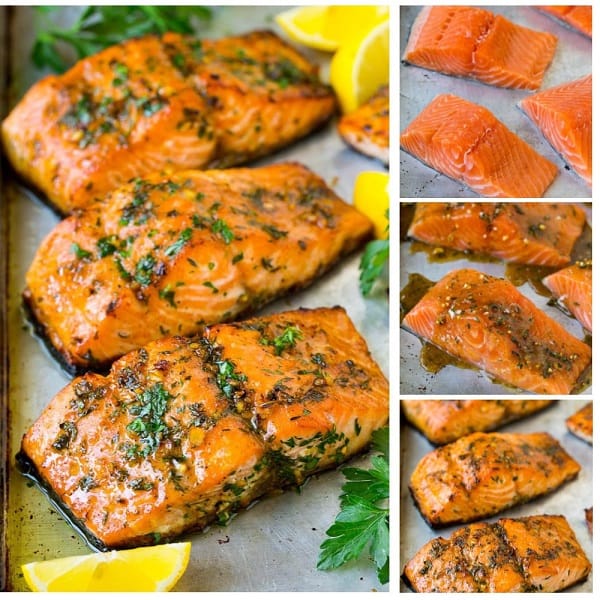
Storing leftover salmon properly is important to ensure that it remains safe to eat and retains its quality. To store cooked salmon, place the fish in an airtight container and refrigerate for up to 3-4 days.
Alternatively, cooked salmon can be frozen for up to two months when it comes time to reheat leftovers, microwave, or bake the fish at a temperature of 400°F (205°C). This will help keep the fish moist while allowing the skin to become crispy.
Finally, make sure that you check your salmon’s temperature with a food thermometer before eating – the internal temperature should reach 145°F (63°C). Following these simple steps will help you enjoy your leftovers safely!
What Not to Do When Baking Fish in Foil
Baking fish in foil is a great way to quickly get a delicious and healthy meal, but some common mistakes can lead to sub-par results. Here are some things to avoid when baking fish in foil:
- Don’t over-marinade fish – Marinades with acidic ingredients like lemon juice can start to cook the fish if left for too long. Make sure to follow the recipe instructions for marinating time, and don’t marinate for more than an hour or two at most.
- Don’t use too much oil or butter – Using too much butter or oil will make the fish soggy and greasy. Use just enough to lightly coat the foil before wrapping it up. Otherwise, your results may be less desirable.
- Don’t overcook – Overcooking, your fish, is one of the quickest ways to ruin it! Keep an eye on it while cooking, and check with a thermometer that you hit the desired temperature before taking it out of the oven.
- Don’t forget seasoning – Be sure to season your fish before wrapping it in foil for maximum flavor! With just a few simple spices and herbs, you can take your baked fish from bland to delicious in no time!
Baking fish in foil is easy to get dinner on the table quickly without sacrificing taste or nutrition. Remember these four tips, and you’ll be well on your way toward perfect baked fish every time!
Common Mistakes People Make with this Recipe
One of the most common mistakes when baking salmon is not preheating the oven properly. Preheating your oven before baking will ensure that your salmon cooks evenly and thoroughly. You should also ensure that the fish is completely thawed before cooking it.
Another mistake that people commonly make when baking salmon is overcooking it. This can result in dry, rubbery salmon that lacks flavor and texture. To avoid this issue, use an instant-read thermometer to check the internal temperature of your fish at intervals throughout the cooking process until it reaches 145°F.
In addition to preheating and testing for doneness, another mistake many people make when baking salmon is not seasoning it adequately. Salmon has a mild flavor, so adding spices or marinades can help enhance its taste and texture.
Finally, many people forget to cover their pans with aluminum foil when cooking salmon in the oven. Aluminum foil helps keep moisture inside and prevents fish from drying out too quickly during the cooking process.
FAQs
Is it necessary to preheat the oven before baking the salmon?
Yes, it is necessary to preheat the oven before baking salmon. I always preheat my oven to 400°F and then line a baking sheet with foil. I rub olive oil or avocado oil on the salmon and place it on the foil-lined sheet. Depending on the size of my filet, I bake it for 12-15 minutes until it is pink.
Preheat a baking sheet in a very hot oven to ensure perfectly cooked salmon; lay the fish on the hot pan and reduce the heat to 400°F. For sockeye salmon, bake at 400F for 10-15 minutes.
However, you should check your salmon periodically to ensure it is adequately cooked, as cooking times may vary depending on the size and oven used.
What kind of foil should I use for baking my salmon?
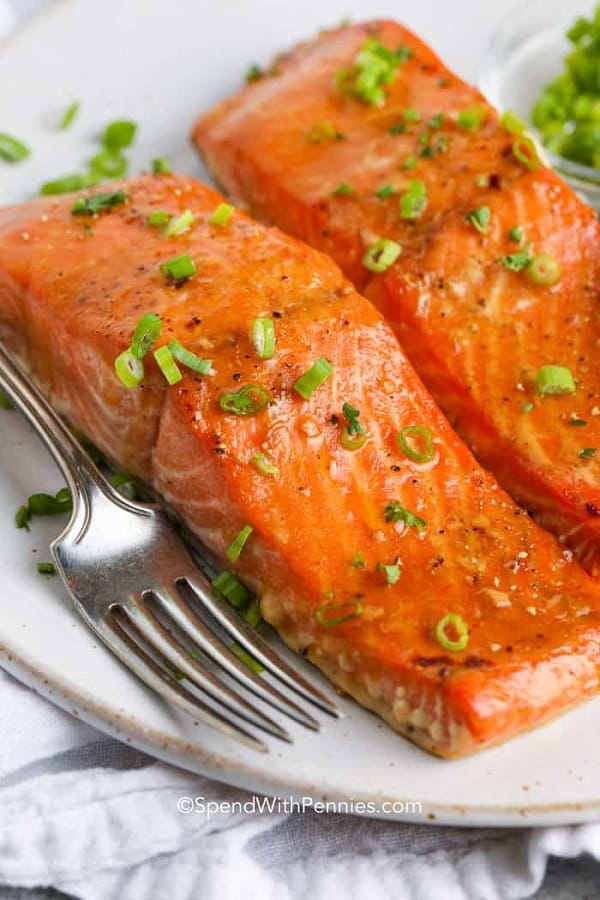
When baking salmon, I find heavy-duty aluminum foil is the best foil. Preheat your oven to 375 degrees F, place a large piece of aluminum foil on a baking sheet, and brush with one teaspoon of olive oil.
Do I need to add oil or butter when baking my salmon in foil?
When baking your salmon in foil, you don’t need to add any oil or butter. However, if you’d like to add extra flavor, brush the salmon with melted butter or lightly coat the center with avocado oil.
You can also top the salmon with butter and other choice ingredients. To do this, place a sheet of foil on a baking sheet and place the salmon on it. When the salmon is almost done, please remove it from the oven and add two tablespoons of cold butter to the top before finishing it in the oven.
Do I need to season my salmon before wrapping it in foil?
Yes, it would be best if you seasoned your salmon before wrapping it in foil. This will ensure that your salmon turns out flaky, moist, and tender every time. Start by brushing a large aluminum foil with olive oil and laying the salmon skin-side down on the foil. Season it to your preference, and then wrap the salmon in a foil pocket.
Are there any other temperatures at that I can bake salmon in foil?
Yes, you can also bake salmon at 350°F in foil. The baking time should be adjusted according to the thickness of the salmon fillet.
For a 1-inch thick fillet, it should be baked for 20-25 minutes. When baking with foil, place the foil packets on a sheet pan before baking in the oven and ensure the salmon reaches an internal temperature of 145°F before serving.
Can I bake salmon in the oven without foil?
You can easily bake salmon without foil in the oven. Preheat the oven to 375F, coat a baking sheet, or use a cast iron pan with foil or parchment paper, and sprinkle with olive oil or cooking spray.
Place the salmon fillets on top of the herbs and lemon, then cover with foil or parchment paper-Bake for about 20 minutes. Once done, remove from the oven and allow to rest for a few minutes before serving. This will ensure that all the flavors are locked in, and your salmon will be perfectly cooked!
Can I bake salmon in the microwave?
You can easily bake salmon in the microwave. Season it with salt and pepper, wrap it in a microwave-safe cling film, and then microwave for 3 to 4 minutes. You may need to add a few more seconds if the salmon is thicker.
To add extra flavor, sprinkle lemon pepper seasoning, salt, and pepper on both sides before microwaving. Lastly, make sure to have a small microwave casserole dish ready before you start cooking. This will make it easier to cook the fish evenly and prevent a strong fishy smell.
Will baking salmon in foil make it soggy?
No, baking salmon in foil will not make it soggy. The foil will help to keep the moisture in the salmon while baking.
Is it safe to bake salmon in foil?
Yes, it is safe to bake salmon in foil if you use food-grade foil and follow the recommended cooking times.
Can I reuse the foil after baking salmon?
Yes, you can reuse foil after baking salmon! All you need to do is wash it in soap and water or put it in the dishwasher. Reusing foil helps to reduce waste and can save you money in the long run.
Keep an eye on your salmon while cooking, so it is cooked through but not overdone. You don’t have to worry about clean-up when using foil either – toss it out when you’re done!
Conclusion
The answer to how long to bake salmon at 425°F in foil will depend on the thickness of your salmon fillets. Generally, a piece of salmon should be baked for 15-20 minutes per inch of thickness at 425°F.
To ensure perfectly cooked salmon, bake it for 12-14 minutes at this temperature. If you want to reheat cooked salmon, cover it with aluminum foil and place it in an oven preheated to 425°F for about five minutes per side. For added flavor, season the fillets with garlic, lemon, and herbs before baking them in a double layer of foil.
Now that you know how long to bake salmon at 425 in foil, we hope you’ll try this recipe! Let us know how it turns out by leaving a comment below.
- How Long To Bake Salmon At 425 in Foil? - December 11, 2022
- How Long To Cook Chuck Roast In Oven At 350? - December 11, 2022
- How Many Chicken Wings Are In A Pound? - November 26, 2022
